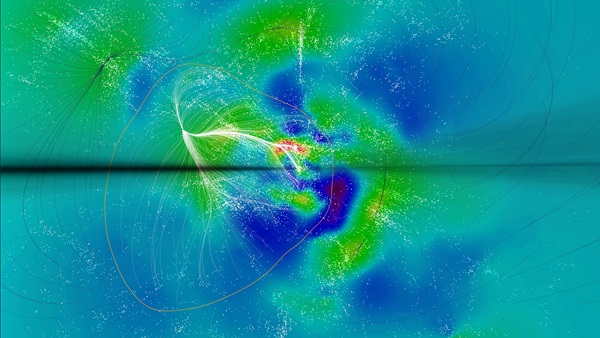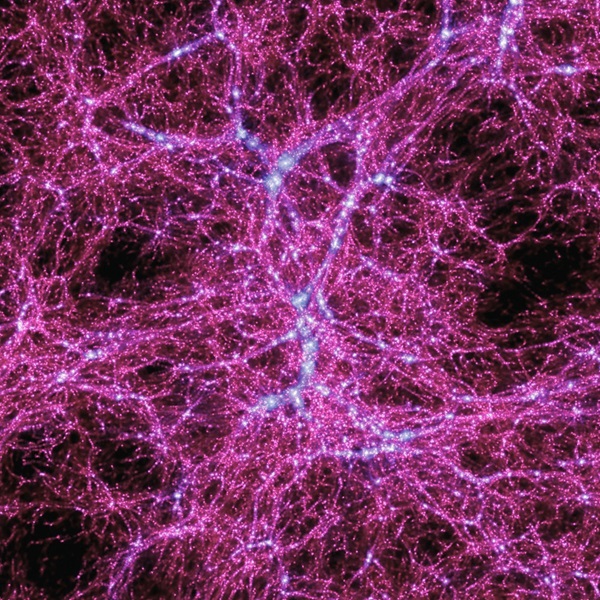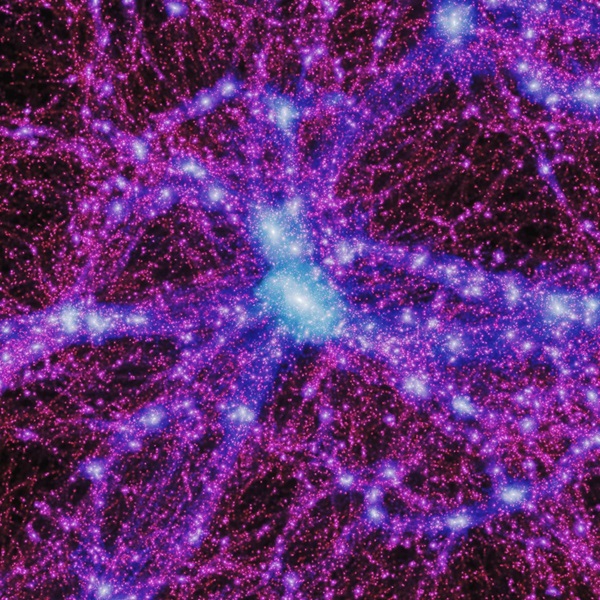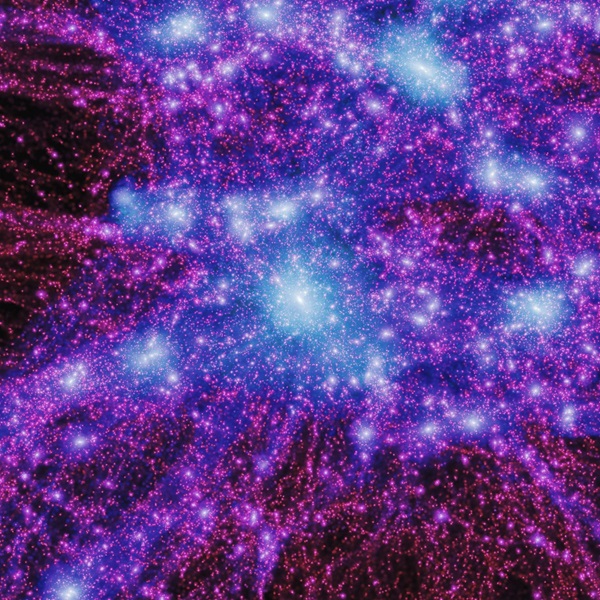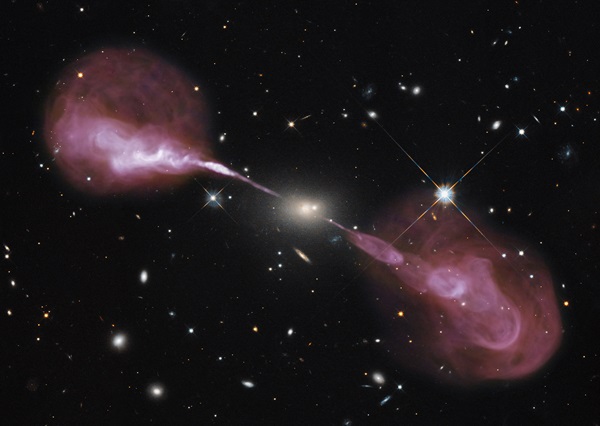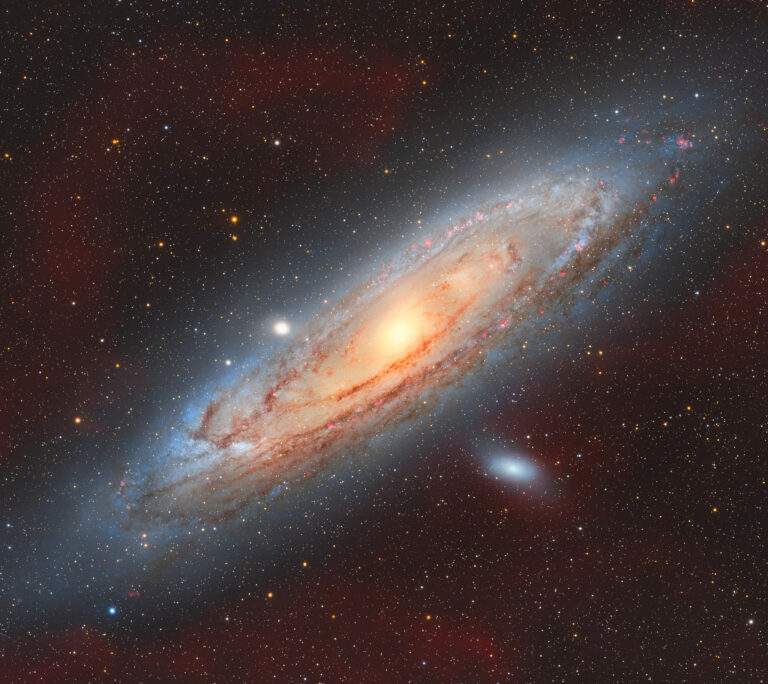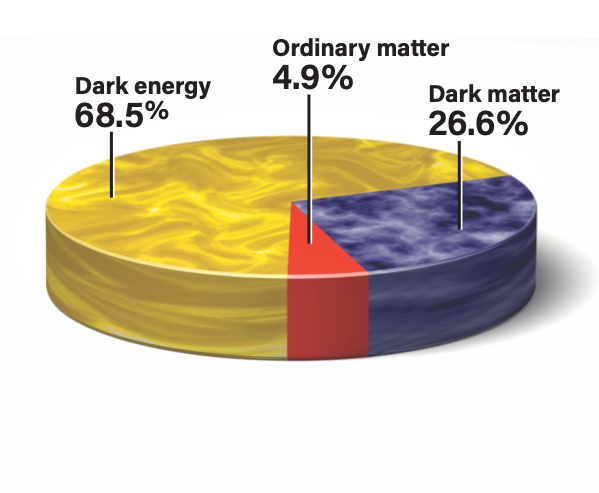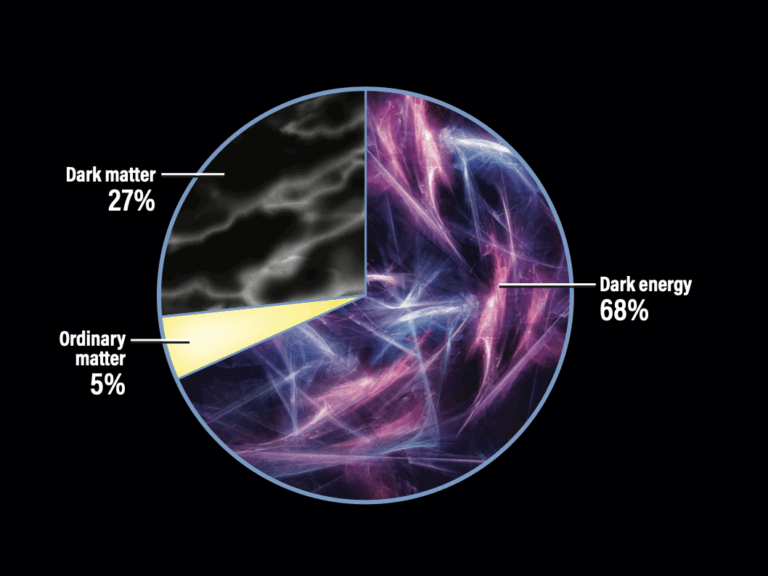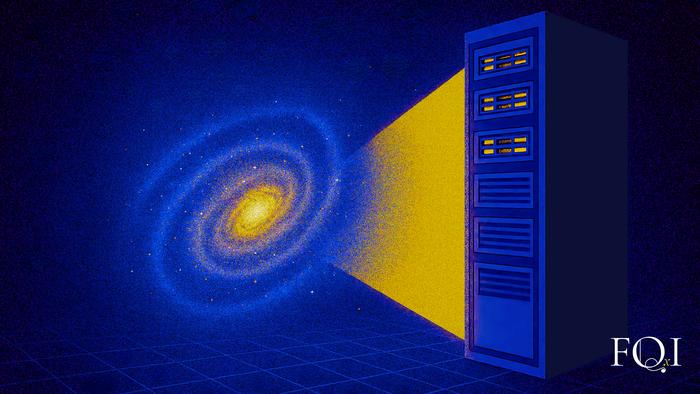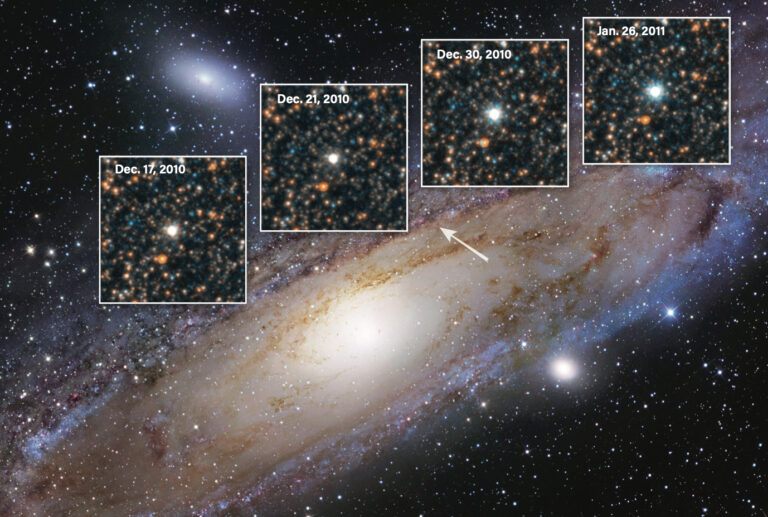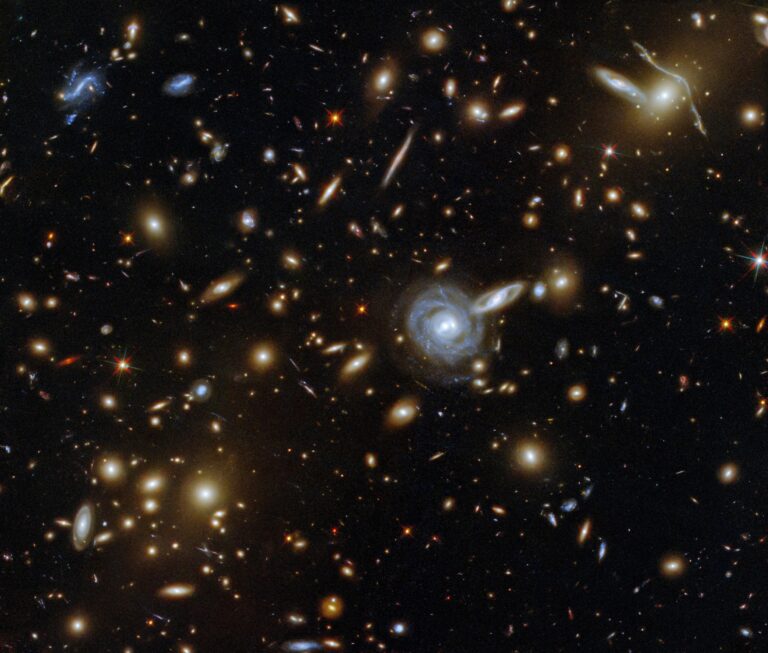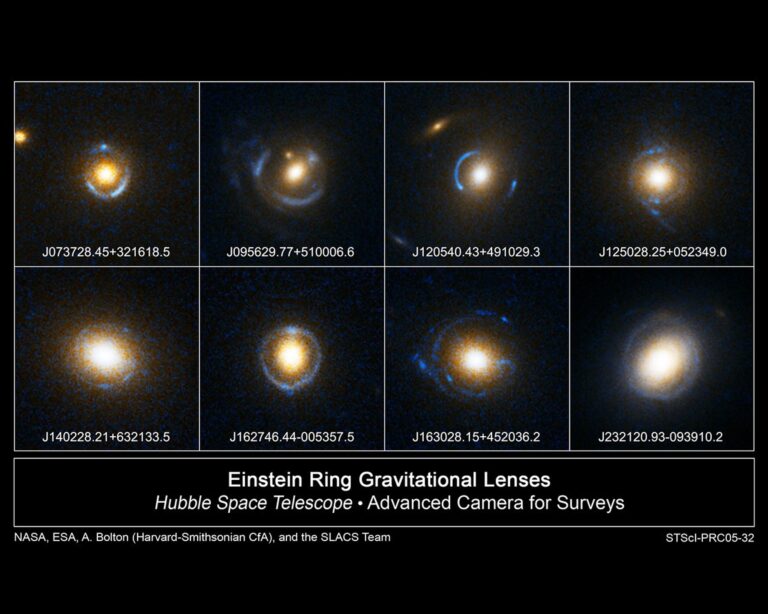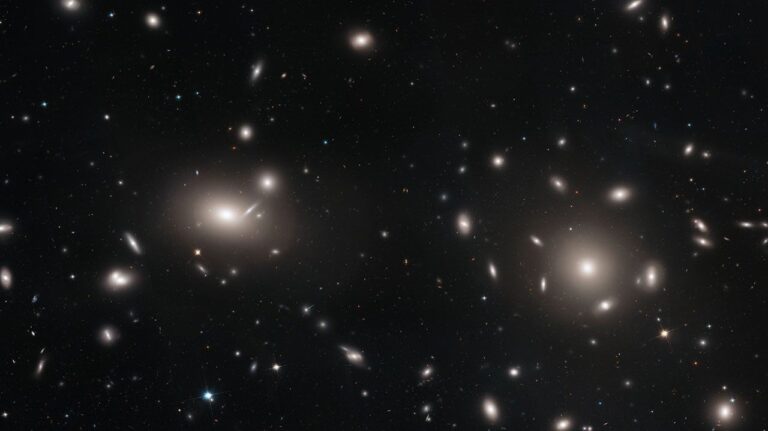Key Takeaways:
- The Laniakea Supercluster, containing the Milky Way and Virgo Supercluster, was defined in 2014 using galaxy relative velocities, encompassing over 100,000 galaxies across 520 million light-years.
- Astronomers utilize galaxy brightness and redshift measurements to determine distances and velocities, accounting for factors like intervening dust and the universe's expansion.
- Large-scale mapping reveals a cosmic web structure with galaxy filaments and voids, influenced by both visible matter and dark matter, with computer simulations aiding understanding of this structure.
- Research into the epoch of reionization focuses on detecting the 21-centimeter radiation from neutral hydrogen, aiming to bridge the observational gap between the cosmic microwave background and the earliest observable galaxies.
But a study published in 2014 showed that our home supercluster is just one lobe of a larger grouping called Laniakea, the Hawaiian word for “immense heaven.” And although the Virgo Supercluster spans a worthy 100 million light-years, Laniakea has a diameter of more than 500 million light-years.
While distance is an easy value to measure on Earth and even within our solar system, it’s much more difficult for locations where no human-made objects have yet explored. Astronomers can’t run a tape measure between another galaxy and Earth. Instead, they study a celestial object’s light.
Scientists have two different methods to compute the distance to a faraway galaxy. The simplest is to use the brightness of the light they collect from it. The University of Lyon’s Helene Courtois, one of the researchers who defined the Laniakea Supercluster, likens this method to determining how far away a 60-watt light bulb is. You already know how luminous the bulb is, so once you measure how bright it appears, you can calculate its distance.
Because intervening dust blocks visible light from these galaxies, astronomers look at the strength of radio waves from them to estimate how much energy the galaxies release in visible light. They then compare the intensity of light collected to their calculations of actual energy released to determine the distances to the galaxies.
The other method of measurement analyzes the light from the brightest galaxies in a cluster to determine how the members it contains are moving. This is a harder process, but it relies on a simple fact: Light can tell scientists about an object’s movement toward or away from us. The light’s color shifts bluer if the galaxy is moving toward Earth and redder if it’s moving away. That movement can arise from the gravitational push and pull of other galaxies or from the expansion of the universe.
We now know that the cosmic fabric is expanding, and it’s bringing galaxies along for the ride. Once scientists compare the movements of many objects in the same area of sky, they can break apart the different motions. When mapping galaxies in a supercluster, astronomers focus on the gravitational pull of both visible matter and unseen dark matter.
In the Laniakea discovery, Courtois and her colleagues used both methods to study the distances to and the movements of more than 8,100 relatively nearby galaxies. They found the boundaries where some galaxies were moving toward one region and others were moving in another direction. That tipping point, like the top of a hill where a stone can roll toward one valley or another, marks the edge of the Laniakea Supercluster. But what lies farther out?
Astronomers began mapping cosmic structure decades ago by analyzing the light from each glowing galaxy using the two previously mentioned techniques. In the late 1970s and early 1980s, a pattern began to emerge: galaxies huddling together with voids in between.
By the late 1980s, astronomers also saw that galaxies near ours are moving toward a specific region of space in the Southern Hemisphere. The force of gravity encourages this movement, which means that this region must contain a huge amount of mass; scientists called it the Great Attractor. All the galaxies in the Laniakea Supercluster are falling toward this spot.
More discoveries followed as astronomers conducted bigger surveys to cover larger areas on the sky. Telescopes and cameras continued to evolve rapidly, and their larger light-grasp and more sensitive detectors allowed scientists to see farther out and further back in time.
But there’s even more material that no telescope can see. The strings of galaxies lie upon a thicker scaffolding of dark matter, a mysterious material that only shows itself through its gravitational interactions with stars and galaxies that we can detect. Dark matter oozes between galaxies in clusters and holds together the strings, or filaments, between superclusters. This universe holds five to six times as much dark matter as normal matter.
Because astronomers can’t see dark matter, the bulk of cosmic structure is invisible. To understand what it looks like, scientists build universes in complex computer simulations that compress all of cosmic evolution into mere weeks. They know roughly how much normal matter and how much dark matter the universe has now. They load this information, along with the laws of physics, into the computer model.
“At the end of the simulation, when the virtual universe is mature, we compare it to the observed universe,” says Courtois. The computer model reveals more structure than observers detect, a cosmic web stretching back billions of years into cosmic history.
Even the brightest galaxies can’t compete with the luminosity of actively dining supermassive black holes. While every large galaxy harbors one such behemoth, only a fraction of them are feeding, a classification that astronomers call “active.” A quasar is one type of active galactic nucleus.
The black hole feeds on material like stars or gas clouds that pass too close. As gravity funnels that material toward the high-mass black hole — like water spiraling toward a drain — it forms a disk. The material rubs against itself and glows due to friction. This light is visible across vast distances — so far, in fact, that the light from the nearest quasar has taken 600 million years to reach us.
Astronomers have found quasars scattered across the universe. The most distant one existed just 750 million years after the Big Bang. Its light has traveled for more than 13 billion years to reach us.
Quasar light is a multiuse tool for studying the distant universe. Scientists can map these objects in the same way they map other galaxies to find structural filaments and voids. Quasars also can act as flashlights to illuminate the gas that lies around their home galaxies, the gas between galaxies, and even the gas falling along nearby filaments.
University of California, Santa Cruz, astronomer J. Xavier Prochaska and colleagues have studied some 20 distant quasars, and they’ve made two big discoveries. First, they saw a huge clump of hydrogen surrounding a quasar that was much larger than the galaxy should be. They reason this gas lies along a filament that contains the quasar. Its light has been traveling for nearly 11 billion years.
In both discoveries, the light he and his colleagues see comes from fluorescence, he says, “where the quasar shines at a range of energies onto a galaxy and the galaxy actually shines back.” Prochaska thinks that with the observing tools set to come online in the next five to 10 years, astronomers will find hundreds of quasars embedded in filaments and forming galaxy clusters.
To the early cosmos
The farther astronomers look from Earth, the less organization they see. That’s because they’re seeing the cosmos at an earlier stage, and modern-day structures — like spiral galaxies and dense clusters of thousands of galaxies — didn’t exist. The universe was not born complex. Instead, after the Big Bang, it was dense and hot, filled with electrons, protons, and light bouncing between those atomic pieces. The cosmos has been expanding since that moment 13.82 billion years ago.
Once it had expanded enough for the temperature throughout the universe to cool to about 4,900° F (3,000 kelvins), each proton grabbed a nearby electron to form a neutral hydrogen atom. With fewer particles floating around, the pinball game was over.
At that point, light was free to stream about the cosmos. That light has been traveling along the fabric of space-time ever since. Today, it bathes the sky in a cool microwave glow, its wavelength stretched by cosmic expansion.
This cosmic microwave background (CMB) looks nearly the same in every direction. It reveals to astronomers what the universe looked like just 380,000 years after the Big Bang: an almost featureless soup of hydrogen and helium.
The tiny differences in temperature it contains reflect tiny differences in density. Eventually, those denser areas grew into galaxies and galaxy clusters, while the least dense regions emptied.
“Understanding that transition, from a simple universe to something with interesting structure in it, is a crucial missing piece in astronomy,” says Steve Furlanetto of the University of California, Los Angeles.
This transformation happened in the astronomical Dark Ages when material wasn’t yet dense enough to form stars, which could light the way. When the first stars and the galaxies they congregated in formed, the overall mix developed into today’s cosmos. But the first galaxies, says Furlanetto, were up to a million times smaller than the Milky Way and lie so far away from us that telescopes cannot see them. Instead, astronomers search for these first objects by how they affected material around them.
Finding this intermediate range, which lies between the CMB (380,000 years into the universe’s history) and the quasars and galaxies that lived 1 billion years after the Big Bang, revolves around the most prevalent element in the cosmos: hydrogen. As stars and galaxies lit up, they spewed high-energy light. This radiation is powerful enough to knock away the one electron a hydrogen atom contains, creating a hydrogen ion.
Those light sources continued to emit energy, “and then bit by bit, the first sources carved cavities of ionized material,” says Saleem Zaroubi of the Kapteyn Astronomical Institute in the Netherlands. These cavities grew while more stars lit up, eventually ionizing all of the neutral hydrogen in their regions of space.
The key to spotting the transition is the prediction, from 1944, that neutral hydrogen can emit radio energy with a wavelength of 21 centimeters. Ionized hydrogen, however, doesn’t emit this radiation. Because neutral hydrogen filled the early cosmos, researchers expect there was enough of it to faintly glow as radio waves. This makes for a region nearer to us with no 21-centimeter signal and a stronger radiance farther away.
Scientists who are on the hunt to map reionization point out that the transition between the neutral, bland universe and the ionized, lumpy universe is a long process — hundreds of millions of years. That is a major missing section along the cosmic distance scale. Zaroubi agrees: “It’s an important step in this scientific narrative of the formation of the universe from the beginning until now.”
Astronomers have learned an incredible amount about how our universe looks at the largest scales and also what it was like in its infancy. Unfortunately, they still are missing a major chapter in the cosmic story.
Yet the scientists who study reionization, like Zaroubi and Furlanetto, are confident that in the next couple decades observations will uncover the distant radio light that tells the history of how our universe evolved from a neutral bath of hydrogen into the complex web of galaxies, stars, and planets we now call home.

